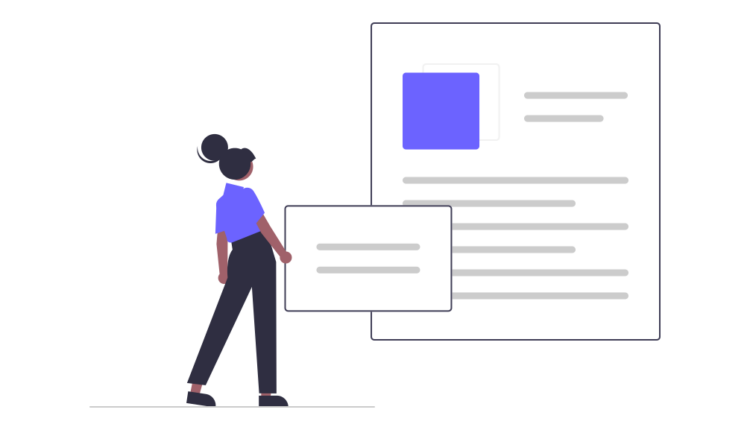Everyone is talking about post bid technology. This Technology develops in the field of online advertising to fulfill market expectations. The advent of header bidding as opposed to the usual waterfall design was a key evolution. By enabling marketers to place real-time bids, header bidding increased competitiveness, but it also had some drawbacks. Post-bid serves as a remedy for this, enabling it simpler to call numerous demand sources without requiring a lot of technological setup. We’ll explore post-bid in this article, including what it is, how it functions, and how it differs from header bidding.
What is Post-bid?
An inventory item is rejected by a publisher’s ad server (usually DFP), which is followed by demand sources being picked up to compete for ad impressions in a post-bid scenario. Post-bid essentially entails loading and executing Prebid.js in a winning line item’s creative to let demand sources compete after the ad server has selected the post-bid line item.
Header Bidding in a Nutshell
In header bidding, an impression is first sent to header bidding demand partners for bidding. Once the bid responses are collected, the publisher’s server (DFP) reveals its direct-sold and exchange-based responses. Since header bidding is the first to submit the response, ad servers can win the impression by simply offering a slightly higher bid than what header bidding provides.
Now, here’s where post-bid comes into play.
What Is Header Bidding? How Publisher Maximizing Revenue?
How Does it Work?
The post-bid line items contain the code (often Prebid.js or another wrapper) for the bid. When an impression becomes available on the page, it functions as follows:
1. The ad tag inside an ad unit asks the ad server (DFP) to serve an ad.
2. Among the available choices, such as direct-sold line items, ad exchanges, and post-bid line items, the ad server chooses the winner.
3. The header auction is started by the line item’s creator if the post-bid line item succeeds.
4. Demand partner bids are contrasted, and the winning bidder gets to show off its ad creative.
How is it Different from Header Bidding?
Let’s compare header bidding and post-bid side by side to better comprehend their distinctions:
| Features | Header Bidding (Pre-bid) | Post-bid |
| Ad server behavior | Ad server called AFTER header auction | Ad server called BEFORE header auction |
| Technical expertise | High-level expertise required | No/Low-level expertise required |
| Ad latency | Depends on timeout settings and additional ad server latency | No ad server latency. Can run ad server and header auctions parallelly to save time |
| Ability to run hybrid header bidding auction | Yes. Can compete with direct line items and AdX line items dynamically | No. Can’t compete with ad server line items in real time |
| Monetization capability | High | Low |
Benefits of Post-bid
1. Setup Doesn’t Require Engineering Assistance
Post-bid setup does not require modifications to the header code or wrapper integration, in contrast to header bidding. The only technical work required is entering tag IDs into the JSON configuration of the third-party tag for demand sources. Whenever the post-bid wins the impression, demand partners may then bid.
2. Reduced Ad Latency
Post-bid reduces latency by focusing on one auction at a time. Since the ad server rejects the impression before it goes to post-bid, it saves additional ad serving time compared to waterfall and header bidding setups.
3. Can Set Fallback
In cases where no demand partner wins the impression during a post-bid auction, a blank impression might be served. To prevent this, post-bid line items can be optimized with fallback settings and/or in-house line items.
Drawbacks of Post-bid
1. No Dynamic Allocation
Post-bid line items are static in nature because they are responsible for obtaining an ad creative once the ad server rejects the impression. Unlike header bidding, which allows dynamic real-time auctioning and winner selection, post-bid is more rigid.
2. Reporting Can Be Difficult
Ad servers may not provide detailed post-bid data in their reports. Publishers typically receive aggregated reports for all demand sources participating in auctions, without separate reports for post-bid auctions. This might necessitate relying on third-party reporting services for detailed demand partner insights.
How to Get Started With Post-bid?
To start using post-bid, publishers need to create line items in the ad server, especially if multiple ad sizes are involved. Once these line items are live, the ad tag will trigger the ad server to choose between them. If a post-bid line item is selected, the header bidding auction will be conducted. Post-bid can be a viable option for publishers who lack the technical resources for header bidding but still want to monetize effectively.
Rediads Header Bidding Solution
Implementing header bidding isn’t enough; consistent optimization is crucial. This is where Rediads header bidding solution shines. With data science and machine learning, we help publishers maximize their yield. Our solution offers:
– Automatic demand partner selection based on optimal requirements.
– Smart timeout management.
– The freedom to bring your own demand.
– Bid monitoring and discrepancy resolution.


